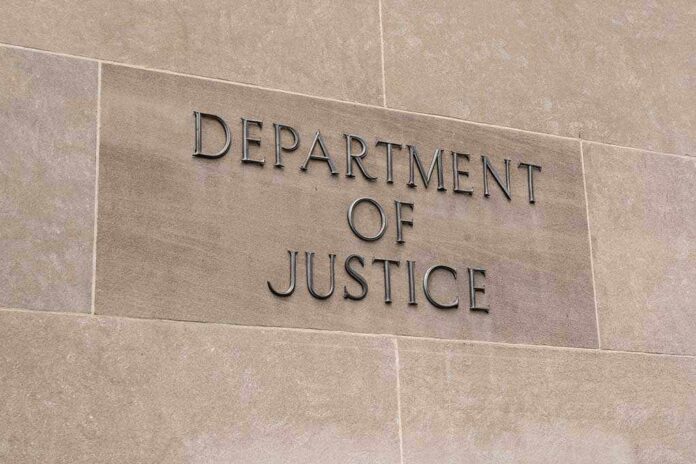President Trump’s signature on the Epstein Files Transparency Act shatters years of government secrecy, forcing the Department of Justice to reveal the names and connections of those entangled in one of America’s most scandalous criminal cases.
Story Snapshot
- Trump fulfills a major campaign promise by signing the Epstein Files Transparency Act into law, mandating full release of DOJ prosecution files related to Jeffrey Epstein within 30 days.
- The act compels public access to files, with Congress receiving unredacted lists of government officials and politically exposed persons involved.
- Overwhelming bipartisan support: House passes 427–1, Senate passes unanimously, despite initial Trump administration resistance.
- The move sets a precedent for congressional power over executive secrecy and signals a dramatic political shift on government transparency.
Trump Delivers on Transparency: Epstein Files Act Signed Into Law
On November 19, 2025, President Donald Trump signed the Epstein Files Transparency Act into law, answering years of public outrage over the government’s handling of the Jeffrey Epstein case. The new law requires the Department of Justice to release all files related to Epstein’s prosecution within 30 days, ensuring these records are available in searchable, downloadable formats for the public. This action directly addresses the demand for openness and fulfills a key promise Trump made during his 2024 campaign—ending the secrecy that fueled suspicion and conspiracy theories for years.
The legislative journey was turbulent. In early 2025, Attorney General Pam Bondi revealed that the infamous Epstein client list sat under review at the DOJ, stoking fresh demands for disclosure. When the White House sent out “Epstein Files: Phase 1” briefings in February, conservative lawmakers blasted the documents as outdated, raising questions about whether meaningful transparency would ever be achieved. Then, on September 2, Representative Thomas Massie filed a discharge petition to force a House vote, bypassing leadership that was reluctant to move forward. By November 12, the petition had the 218 signatures needed—driven overwhelmingly by Democrats, a sign of rare bipartisan unity on transparency, even as many suspected political motives on both sides.
Bipartisan Pressure Forces Administration’s Hand
Despite initial opposition from key figures in his own administration, Trump reversed course after it became clear the measure had unstoppable momentum. Insiders described support for the discharge petition as “a very hostile act to the administration.” However, on November 15, facing inevitable passage, Trump publicly urged House Republicans to support the bill, branding the Epstein matter a “Democrat Hoax” and positioning himself as the champion of transparency. The House passed the act 427–1, with only Republican Clay Higgins voting no; the Senate approved it by unanimous consent. Speaker Mike Johnson, who had previously opposed the bill, expressed disappointment but acknowledged the overwhelming will of Congress.
Trump’s decision to sign the act—announced via Truth Social, not a press event—demonstrates both political calculation and recognition of the public’s demand for answers. Within 30 days, the DOJ must release all Epstein-related files, while Congress will receive unredacted lists of government officials and politically exposed persons named in those documents. This unprecedented release targets decades of stonewalling and signals a new era of forced transparency—one that could have far-reaching effects on both parties and the reputations of those named.
Political Fallout and High-Stakes Investigations
Trump’s signing of this law is a direct rebuke to the kind of government opacity that frustrated Americans for years, especially under past administrations that were quick to invoke “national security” or “privacy” to shield the powerful from scrutiny. The act not only mandates public disclosure but also sets the table for aggressive congressional investigations: Judiciary Committees in both chambers will have unredacted access to names and relationships previously hidden from public view. Trump’s November 15 order for a DOJ investigation into Epstein’s connections with banks and prominent Democratic figures like Bill Clinton and Reid Hoffman underscores the political stakes—this is not just about transparency, but about holding elite networks accountable, regardless of party.
While the overwhelming vote for the act highlights rare cross-party agreement, it also reveals deep divides about the motives behind the push. Democrats may see transparency as a way to distance themselves from suspicion, while Republicans aim to expose connections long suspected by conservative voters. The lone House “no” vote from Rep. Clay Higgins remains unexplained, fueling further speculation about hidden interests. As the DOJ prepares the files for release, Americans wait to see which names will surface and what consequences may follow for those exposed.
Impact: A New Standard for Government Transparency
This law sets a powerful precedent: Congress can force the executive branch to open the books on criminal cases of intense public interest, even over presidential resistance. For conservative Americans frustrated by years of government overreach, double standards, and cover-ups, this is a significant victory that reasserts constitutional checks and balances. The public release of the Epstein files will bring long-awaited sunlight to a case that symbolized elite impunity, while giving Congress the tools to investigate further. As the countdown begins for the DOJ’s deadline, the nation braces for revelations that could shake both political and media establishments—and provide long-denied answers to the American people.
Sources:
Epstein Files Transparency Act – Wikipedia
H.R.4405 – Epstein Files Transparency Act of 2025 – Congress.gov











